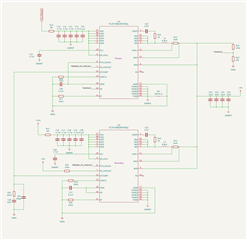Other Parts Discussed in Thread: LM70880, LM706A0-Q1
Tool/software:
Hi team,
I'm trying to design a DCDC circuit with the following specs:
Vin=24V
Vout=5V
Iout(max)=10A
I based my design on the datasheet and the forum thread linked in this post. Since simulation is not an option, I would really appreciate if someone can double check the schematics.
Thank you in advance.


